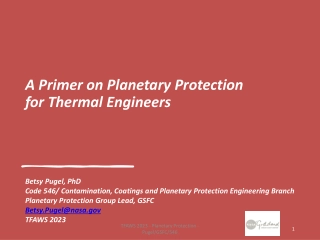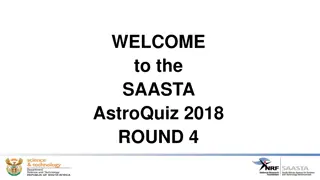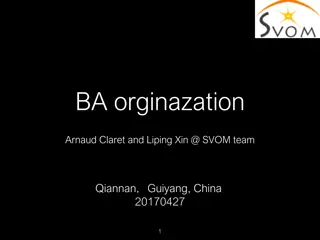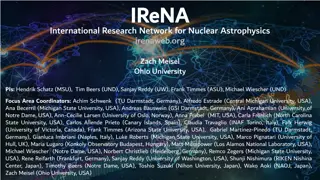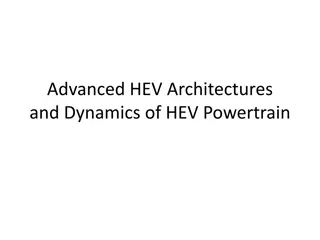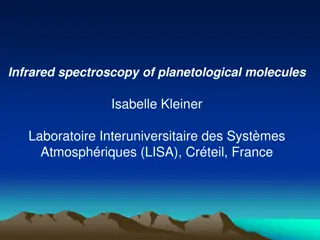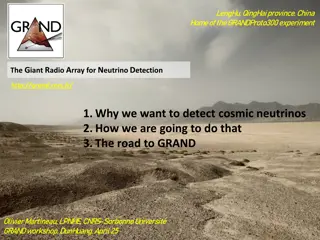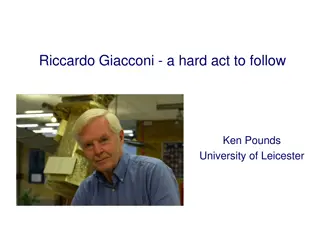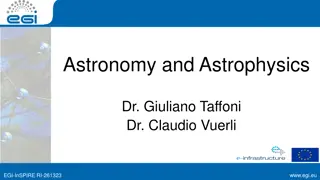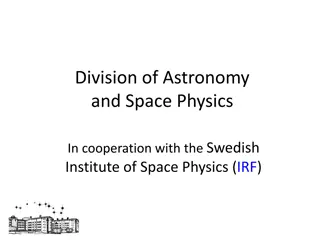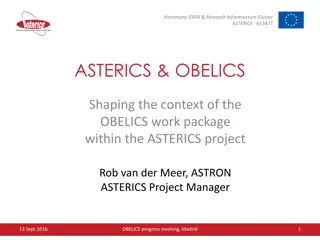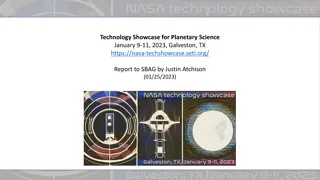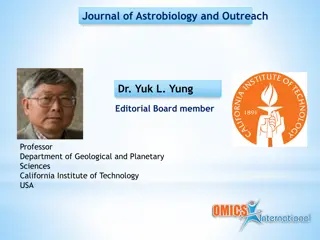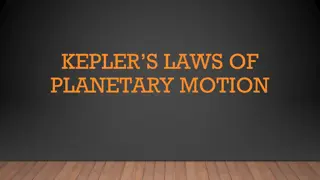Fascinating Research in Astrophysics and Planetary Science
Prof. Alberto Bolatto explores extragalactic research, Prof. Drake Deming studies extrasolar planets, Dr. Tony Farnham specializes in cometary studies, Lori Feaga maps cometary gas comae, Prof. Suvi Gezari investigates supermassive black holes, and Prof. Douglas Hamilton delves into planetary dynamics. These experts contribute to our understanding of the universe through their groundbreaking research in astrophysics and planetary science.
Download Presentation

Please find below an Image/Link to download the presentation.
The content on the website is provided AS IS for your information and personal use only. It may not be sold, licensed, or shared on other websites without obtaining consent from the author.If you encounter any issues during the download, it is possible that the publisher has removed the file from their server.
You are allowed to download the files provided on this website for personal or commercial use, subject to the condition that they are used lawfully. All files are the property of their respective owners.
The content on the website is provided AS IS for your information and personal use only. It may not be sold, licensed, or shared on other websites without obtaining consent from the author.
E N D
Presentation Transcript
Prof. Alberto Bolatto pursues several lines of extragalactic research in the nearby and high-redshift universe. Shown here is an image from S3MC/S4MC, a Spitzer Space Telescope project for imaging and spectroscopy of the Small Magellanic Cloud in the mid- and far-infrared.
Prof. Drake Deming studies planets that orbit distant stars, called extrasolar planets. Many of these planets transit their stars and are also eclipsed by their stars. The image is an artist conception of an extrasolar planet transiting its star. The graph shows real infrared intensity data for an extrasolar planet that is eclipsed by its star. The dip in the data is caused by the disappearance of the planet during eclipse.
Deep Impact spacecraft image: dust jets in the inner coma of Comet Tempel 1 Dr. Tony Farnham is a Senior Research Scientist who specializes in studies of cometary nuclei and comae, and the interactions between them Comet Machholz: Spirals produced by jets spewing cyanogen gas from a rotating nucleus Deep impact: Large grains surrounding the nucleus of comet Hartley 2
Lori Feaga, an Associate Research Scientist in the department, brings her spectral analysis expertise to the planetary group. Her research includes determining the composition of and mapping the gas comae/atmospheres of comets and other small bodies using infrared and UV spectra. The water and carbon dioxide coma of comet Tempel 1, the target of the Deep Impact mission, is mapped in the figure to the right.
Prof. Suvi Gezari searches for transients associated with the tidal disruption of stars by dormant supermassive black holes lurking in the nuclei of distant galaxies. Shown here is an event discovered by GALEX and Pan-STARRS1, and the computer simulation of the fate of the star being ripped apart by the black hole s strong gravitational tidal forces.
Prof. Douglas Hamilton is a Planetary Scientist who studies the orbital dynamics of moons and rings. He co-discovered Saturn s giant Phoebe ring and the smallest two moons of Pluto, Kerberos and Styx.
[N II] H Prof. Emeritus Pat Harrington s research focus is planetary nebulae: shells of gas and dust expelled by stars when they reach the end of their lives. This picture is an image of a nebula (right) and its spectrum (left) taken with the Hubble Space Telescope, showing the Doppler shifts due to high velocity jets. Velocity HST Image & STIS spectrum of He 3 1475 (A protoplanetary nebula with jet velocities ~ 1000 km/s)
Professor and chair Andy Harris attempts to understand the energetics and physical conditions within galaxies and their nuclei. He runs the High Frequency Radio Astronomy Laboratory at the University of Maryland. This picture shows Zpectrometer, an ultra-wideband spectrometer which he has built for the NRAO Green Bank Telescope.
Dr. Ludmilla Kolokolova focuses on remote sensing of small bodies: comets, asteroids, Kuiper Belt Objects, dust in the Solar System and beyond. She explores the structure of cosmic dust particles and surfaces of icy and rocky bodies using computer modeling of the light they scatter and emit. She is specifically interested in polarization of the scattered light. Among other features, it allows distinguishing between molecules of biological and non-biological origin, and thus can be used for the search for life in space. Ludmilla combines remote sensing results with space mission data and manages archiving the data from NASA missions which visit 'small bodies'.
Dr. Tim Livengood uses infrared, optical, ultraviolet, and submillimeter spectroscopy, and neutrons, and whatever else works, to study atmospheres and volatiles throughout the solar system.
Dr. Gennady Milikh studies phenomena in the Earths ionosphere due to powerful radio emission. He also works on models of high altitude lightning, so called Red Sprites and Blue Jets. Besides, he works on neutron telescope (LEND) flying on board of the NASA lunar mission (LRO). He is shown when testing the LEND instrument.
Prof. Cole Miller's research in the last few years has focused on theory and modeling of gravitational radiation and high-energy photons from neutron stars and black holes. The plot above is from a paper discussing mergers of black holes within dense star clusters.
Prof. Lee Mundy studies the formation of stars and planets in our Galaxy. This picture is from a Spitzer Space Telescope survey searching for young and newly- forming stars.
Prof. Richard Mushotzky studies active galactic nuclei and clusters of galaxies, specializing in x-ray observations with space telescopes. Here, an x-ray image from ROSAT (pink) is overlaid upon an optical image, showing the extremely hot gas at the center of a galaxy cluster.
U M D A stronomy O bservatory http://ter.ps/observatory
Prof. Dennis Papadopoulos is part of the Space Plasma Physics group, which studies phenomena in the Earth s ionosphere and magnetosphere. He is shown here at the High Frequency Active Auroral Research Program facility in Gakona, Alaska, which he played a key role in developing.
Prof. Derek Richardson uses high- performance computers to simulate gravitational and collisional dynamics of small solar system bodies, with applications from planet formation to granular flows. He is also co-investigator on the DART mission. Itokawa, a tiny rubble-pile asteroid. Simulation of the NASA OSIRIS-REx regolith sampling mechanism. Radar-derived model of 1999 KW4, a binary asteroid. The primary is spinning so fast, material can nearly lift off its surface.
Prof. Massimo Ricotti is currently studying the first epochs of galaxy and star formation in the Universe. The images shown here are from his simulations of the development of galaxy clustering in the early Universe.
Pr Pro of f. . Su t to o c co on nst str ra ai in n t th he e c co om mpo So Sol la ar r Sy Syst ste em m o obj bje ec ct ts i c co om me et ts s, , a ast ste er ro oi ids Sun nsh shi in ne e s r s re ese sea ar rc ch h u use posi sit ti io on n o of f v va ar ri io ou us s s in nc cl lu udi din ng: ds, , m me et te eo or ri it te es s, , a an nd t ses spe s spec ct tr ro osc sco op py y g: d th he e Mo Moo on n
Prof. Sylvain Veilleuxs research interests center on understanding the nature, origin and impact of starburst/black-hole driven activity in galaxies, and on the formation and evolution of galaxies. The images here are from a review article co-authored by Prof. Veilleux which discusses the winds in galaxies that push gas outward away from the galaxy. These winds are caused by numerous supernovae or are side-effects of giant black holes.
Prof. Stuart Vogel studies star formation and gas in nearby galaxies. (Left) CARMA image of molecular gas in the Whirlpool galaxy; (Right) ionized gas velocity
Associated with the Small Bodies Group, Elizabeth Warner runs the UMD Astronomy Observatory, mentors students, and maintains several websites. And while she enjoys observing exoplanet transits, variable stars, asteroids & comets, she has a preference for asteroid occultations. Left: Observing comet 46P/Wirtanen 2018-12-18 Top right: Pinhole projection from Total Solar Eclipse 2017-08-21 Mid-right: (372) Palma occultation 2018-02-21 Lower right: Elizabeth with grandson. 2018-06-25
This is only a sampling of the astronomy personnel and the research being performed at the University of Maryland, College Park. For more information, check us out online! www.astro.umd.edu
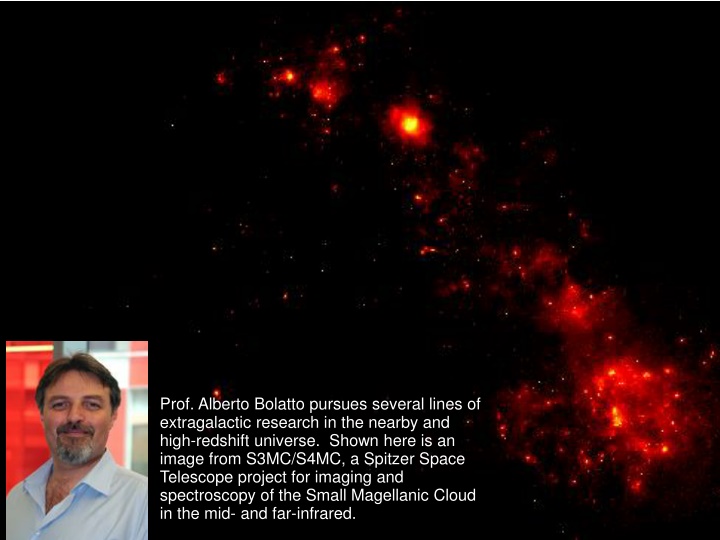

![[PDF⚡READ❤ONLINE] Black Hole Astrophysics: The Engine Paradigm (Springer Praxis](/thumb/21503/pdf-read-online-black-hole-astrophysics-the-engine-paradigm-springer-praxis.jpg)
![❤[PDF]⚡ Planetary Ring Systems (Springer Praxis Books)](/thumb/21506/pdf-planetary-ring-systems-springer-praxis-books.jpg)
![[PDF⚡READ❤ONLINE] Cosmology and Particle Astrophysics (Wiley-Praxis Series in As](/thumb/21627/pdf-read-online-cosmology-and-particle-astrophysics-wiley-praxis-series-in-as.jpg)
